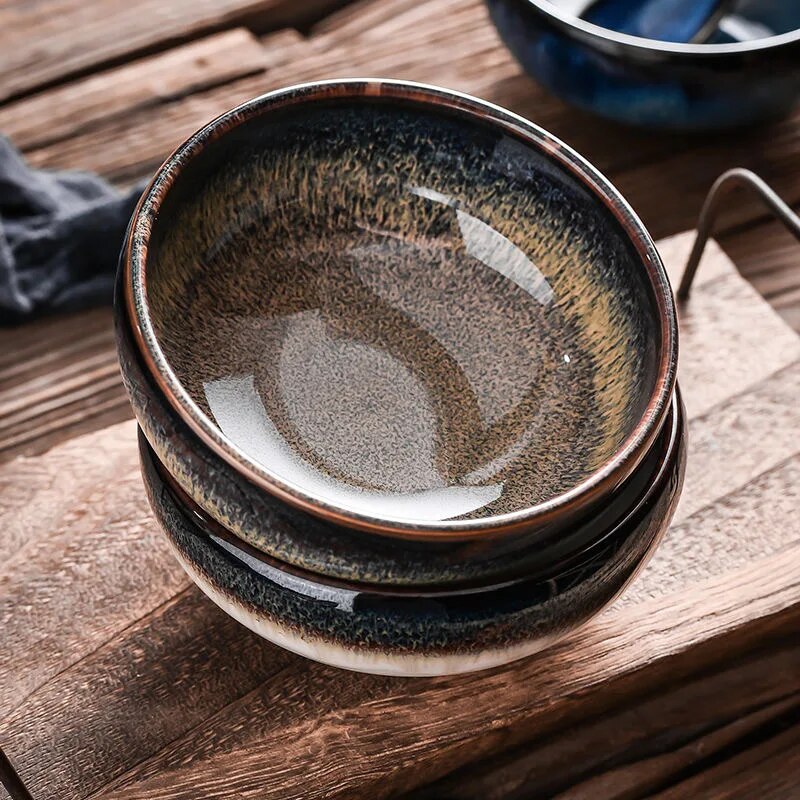
Introduction: Unveiling the Artistry of Chinese and Japanese Plates
Chinese and Japanese plates are not just tableware; they are expressions of centuries-old traditions, craftsmanship, and cultural heritage. From delicate porcelain to rustic ceramics, Chinese and Japanese tableware encompass a rich tapestry of styles and designs that captivate the senses and elevate the dining experience. In this guide, we’ll embark on a journey through the artistry of Chinese and Japanese plates, exploring their fascinating history, intricate craftsmanship, and timeless elegance. Join us as we celebrate the enduring beauty and cultural significance of Chinese and Japanese tableware.
The History of Chinese and Japanese Plates
The history of Chinese and Japanese plates is steeped in tradition and craftsmanship, with each region boasting its own distinctive styles and techniques. In China, porcelain production flourished during the Tang dynasty (618-907 CE), leading to the creation of exquisite blue-and-white ceramics prized for their beauty and durability. Meanwhile, in Japan, pottery making has been an integral part of the culture for centuries, with iconic styles such as Imari and Kutani ware originating during the Edo period (1603-1868).
Chinese and Japanese plates served not only as practical vessels for serving food but also as symbols of status, artistry, and cultural identity. From ornately painted landscapes to delicate floral motifs, Chinese and Japanese plates reflect the aesthetic sensibilities and spiritual beliefs of their creators, making them cherished heirlooms passed down through generations.
Styles of Chinese and Japanese Plates
Chinese and Japanese plates encompass a diverse range of styles, each with its own unique characteristics and aesthetic appeal. Some popular styles include:
- Blue and White Porcelain: Blue-and-white porcelain, originating in China during the Yuan dynasty (1271-1368 CE), features intricate cobalt blue designs painted onto a luminous white background. This iconic style later influenced Japanese ceramics, giving rise to the beloved Arita ware and Imari ware.
- Imari Ware: Imari ware, named after the port city of Imari in Japan, is renowned for its bold colors, intricate patterns, and gold accents. Originally exported to Europe in the 17th century, Imari plates are characterized by their vibrant designs inspired by nature, mythology, and traditional Japanese art.
- Kutani Ware: Kutani ware, originating in the Ishikawa prefecture of Japan, is known for its rich colors, intricate patterns, and elaborate decorative techniques. Kutani plates often feature hand-painted designs depicting scenes from nature, folklore, and Japanese mythology, making them prized collector’s items.
Incorporating Chinese and Japanese Plates into Your Dining Experience
Incorporating Chinese and Japanese plates into your dining experience adds a touch of elegance, sophistication, and cultural appreciation to your meals. Here are some tips for incorporating these exquisite pieces into your tableware collection:
- Traditional Table Settings: Create traditional table settings inspired by Chinese and Japanese cuisine by using authentic plates, bowls, and serving dishes. Pair Chinese blue-and-white porcelain with chopsticks and bamboo steamers for a Chinese-inspired feast, or showcase Japanese Imari plates alongside sushi and sashimi for a Japanese-inspired meal.
- Cultural Celebrations: Use Chinese and Japanese plates to celebrate special occasions and cultural holidays, such as Chinese New Year, Japanese Cherry Blossom Festival, or Lunar New Year. Incorporate traditional motifs and symbols into your table settings to honor and respect the cultural heritage of these festivities.
- Tea Ceremonies: Host traditional Chinese and Japanese tea ceremonies using authentic tea sets and tea wares, including delicate tea cups, tea pots, and serving trays. Arrange Chinese blue-and-white porcelain tea sets for a classic Chinese tea ceremony, or showcase Japanese Kutani ware for an authentic Japanese tea experience.
Conclusion: Celebrating Eastern Elegance with Chinese and Japanese Plates
In conclusion, Chinese and Japanese plates are not just tableware; they are cultural treasures that embody centuries of tradition, craftsmanship, and artistry. Whether you’re hosting a special occasion, celebrating a cultural holiday, or simply adding to your tableware collection, Chinese and Japanese plates offer endless possibilities for creativity, style, and cultural appreciation. So why not elevate your dining experience with the enduring beauty and timeless elegance of Chinese and Japanese plates?


